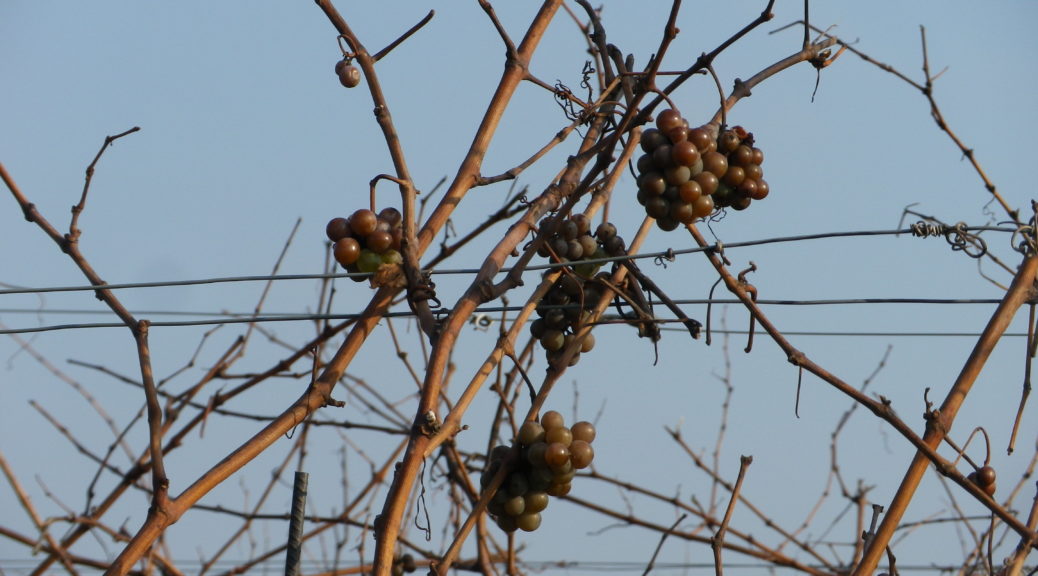What I Learned
Vienna is the only European capital with vines grown within its city limits. While the Romans were here, definitive proof that vines were located inside the walls, in the current First District (the area around the Hofburg and the cathedral), dates only to the late Middle Ages.
Nowadays, there are three primary vineyard areas within the city, (and two other areas, by Sievering and Oberlaa). The Bisamberg, east of the Danube, centering around Stammersdorf and Strebersdorf. Wine growing in Stammersdorf, on the Bisamberg, began in the 12th century. The terroir here favors the Pinot family of grapes.
Opposite it, on the other side of the Danube, on the Nussberg centering around Nussdorf, Heiligenstadt, Grinzing and Neustadt am Walde, the soils are more calcareous. This provides good conditions for both Riesling and Gruner Veltliner, which has become a great Austrian varietal wine.
In the suburbs, southwest of the old city center, around Mauer, there is a third area. The soils change, and become rich, black, earthy soils. This is a smaller area of vineyards.
The vast majority of Vienna’s total harvest (about 80 %) is of the Riesling, Chardonnay, Pinot Blanc, and Neuburger (Pinot Blanc and Silvaner cross) varietals. These are all white varietals, and white wine is what you find in abundance in Vienna – especially the varietal wine Gruner Veltliner, and a unique local cuvee: Wiener Gemischter Satz.
Wiener Gemischter Satz is a wine blend from several white varietals. Rules state that all wines labeled Wiener Gemischter Satz DAC, must contain at least 3 white varietals. Up to 30 different white varietals are allowed. There can be no more than 50 percent of one varietal, and at least 10 percent of the any of the third varietal. Furthermore, in creating this blend, all varietals must be grown in a Viennese vineyard, harvested and pressed together. The resulting blend may be released no earlier than the first of March of the following year. As a result of these rules, each Wiener Gemischter Satz is truly one of a kind. Although most of the ones I encountered seemed to have only three varietals within the blend, the Zahel Winery in Mauer ambitiously combined twenty (20!) different varietals to produce their Wiener Gemischter Satz. They named it the Five Points Wiener Gemischter Satz, as it rather patriotically includes grapes from all of the five vineyard areas within Vienna. (Quite a logistical feat considering that the grapes must be harvested and pressed together – and Vienna is a large city.) Sadly, it is sold out.
What I Tasted
2015 Wiener Gemischter Satz, DAC Bisamberg, Qualitaetswein, Trocken, Weingut Wieninger: A dry white varietal blend (Weissburgunder (Pinot Blanc), Grauburgunder (Pinot Gris) and Chardonnay) with medium minus gold color; green apple and white stone fruits nose, with same flavors; medium minus acidity.
2015 Wiener Gemischter Satz, DAC, Oesterreichischer Qualitaetswein, Trocken, Weingut Christ: A dry white varietal blend, with medium minus gold color; a nose that is fruity, peachy, with slight hints of exotic fruits, and ripe white fruits and vanilla flavors, medium minus acidity, with a smooth, tangy (as in ripe green apple) finish.
2015 Gruener Veltliner, Herrenholz, Qualitaetswein, Trocken, Weingut Wieninger: A dry white wine with medium gold color; slight floral and red grapefruit nose, with vanilla, peach, red grapefruit and ripe green apple flavors; medium acidity.
2015 Gruener Veltliner, Qualitaetswein, Trocken, Weingut Sammer: A dry white wine with light plus gold color; slight green apple nose with a bruised red apple flavor; medium minus acidity.
2012 Red Wine Cuvee “Wiener Trilogie”, Oesterreichischer Qualitaetswein, Trocken, Weingut Wieninger: A dry red wine blend (primarily Zweigelt, with some Merlot, and Cabernet Sauvignon), with dark garnet color; a tobacco and leather nose, with red currant, dried cherry and prune flavors; medium plus tannins.
